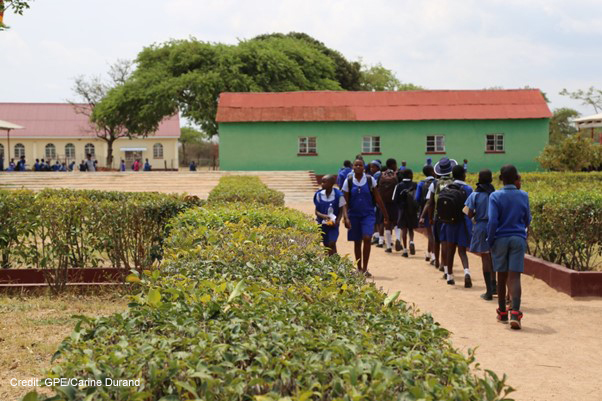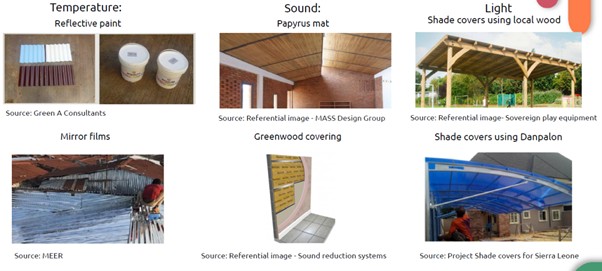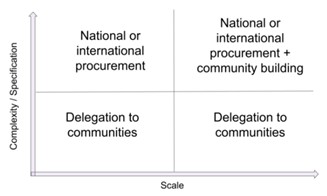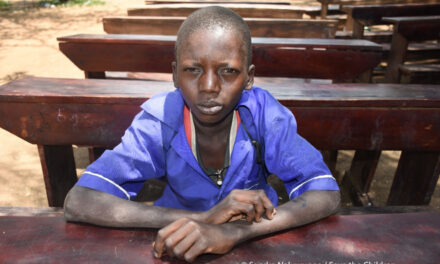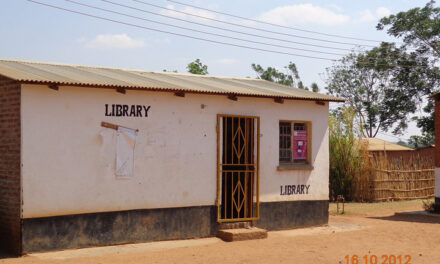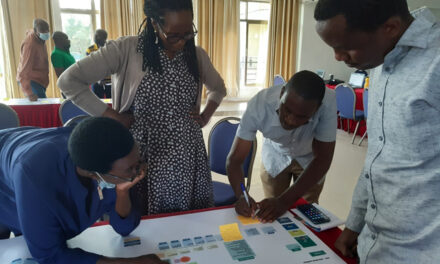This blog was written by Colin Bangay, Foreign, Commonwealth & Development Office. It was originally published on the Global Partnership for Education website on 11 December 2023.
Design principles and 5 factors to consider for building climate-resilient school infrastructures.
The incidence of extreme weather events across the globe is on the rise, most notably in countries least responsible for their underlying climatic causes, but most vulnerable to their impacts.
In 2022 alone, 27,000 schools were damaged or destroyed in Pakistan, while others were commandeered as crisis centers, disrupting the education of 2.5 million children. Two years on and children are still being educated in temporary structures, offering little shelter from the elements.
In the same year, 1.5 million children were impacted in Bangladesh, while 51 schools were hit by heavy rains and floods in Zimbabwe. This year, half a million children were displaced from schools in Malawi following Cyclone Freddy.
We appear to be entering an era where repairing damage to education infrastructure caused by extreme weather events could displace investments in quality improvement.
The situation is like playing a game of snakes and ladders, but on a board with no ladders: any gradual progress made is setback by climate/environment shocks. So, what can we do to put the ladders back?
Linking school and classroom environment to learning quality
Anyone who has ever been in a concrete-walled, corrugated iron-rooved building in the heat of the dry season or experienced the noise of a tropical rainstorm will appreciate how this can impact on learning and teaching.
Heat, light, sound, air quality and water availability/dehydration all have physiological impacts, even more so on children with special needs.
Innovative UKAID funded research premised on a ‘direct line of sight’ between school buildings and their impact on carbon intensity, safety, inclusion and learning is underway in Tanzania. Initial research findings show that temperatures in Tanzanian classrooms are regularly over the 21-26 °C range of the South African Labour Guide.
They’ve also correlated temperature with learning attainment: an increase of 1 °C in average temperature during the school year is associated with a decrease in on the school-leaving exam performance by 1.1%.
This may seem relatively small, but the significance of classroom temperature shouldn’t be underestimated.
A review of 18 different studies found that children improved on psychological tests and school tasks by 20%, on average, when the classroom’s temperature reduced from 30 °C to 20 °C.
Classrooms in Tanzania are hot and getting hotter. (Red is where the max school time temperature is above 28.7°C). Source from Fab Inc and Laterite.
Some schools heat quicker than others – suggesting orientation and design are important. Source from Fab Inc and Laterite.
What can be done
Responding to a changing climate involves consideration of what can be done now and what adaptations are needed for the future.
The Tanzania research is trialing the effectiveness of low-cost retrofits to school buildings to respond to challenges caused by rising temperatures including:
- Increasing shading afforded by vegetation or false ceilings (made from reed or bamboo mats) to reduce temperature and improve acoustics
- Painting corrugated iron roofs white to increase reflectivity and reduce heat radiation inside buildings by up to by 4.5 °C
- Using information and communications technology (ICT) to identify areas most prone to water shortages and to tailor and sequence school water and sanitation responses accordingly
- And using satellite imagery of school roof areas to assess their potential for effective water catchment for areas suffering from declining water tables and increasing unreliable rainfall.
Possible retrofits. Credit: Open Development Education.
New builds: 5 factors to consider
Retrofits are a start, but there is an urgent need to rapidly expand school and classroom provision to meet growing student populations (as well as rebuild those destroyed by extreme weather). This has led to the proliferation of easily-built designs.
These designs have often not been updated since the 1970s or 80s, make use of concrete blocks and pay limited attention to environmental issues such as carbon footprint, flood risk or the need for water catchment.
The first step in developing climate-smart school infrastructure is to create national policy and planning guidelines for new schools, school renovations and school expansions to ensure they are resilient to context-specific climate hazards.
Alongside considerations of, energy, water supply, waste disposal etc, experience points to 5 elements you can’t retrofit but are often not factored into new builds:
- Location: Advances in geographic information systems and access to satellite data now make it cheap and easy to identify the most logical locations to build schools, considering key factors such as existing provision, population density, physical accessibility for all and flood vulnerability.
- Orientation: Attention to a building’s orientation relative to the sun’s path through the sky has a massive impact on the level of heat a building absorbs. Similarly, prevailing winds can impact on ventilation and exposure to air pollution.
- Form: The physical shape and dimensions of classrooms can have a significant impact on light, temperature and acoustics – long, narrow buildings can make it hard for those at the back to see the blackboard (though they do facilitate cross ventilation). In India, the Activity-Based Learning program promoted octagonal shaped classrooms to facilitate group work – there is a geography to pedagogy! Similarly, raising the ‘pedestal’ on which a school sits and building in exits for flood water to escape are sensible in areas prone to flood risk.
- Materials: There’s growing interest in the use of local materials while also reducing reliance on high carbon footprint cement. Good examples of using localized materials and designs are in Sierra Leone, Bangladesh and at scale in Malawi.
- Who makes the building: How you contract people to build classrooms has implications for cost, but also community ownership and employment. Options available tend to vary according to complexity and are reflected in cost.
The relationship between scale/build complexity and procurement approach. Credit: FCDO Education Advisers Infrastructure Guide (forthcoming).
Next steps
A big challenge going forward is breaking the inertia of the status quo in education infrastructure.
Scaling up from inspirational bespoke designs to mass production requires finding ways of producing and quality assuring pre-fabricated natural material components at scale.
Such materials need to be usable by localized building teams who can integrate them into climate-smart, carbon- and learning-friendly designs.
Changes to how infrastructure is built and managed is just one element in how education responds to pressing climate, environmental and biodiversity challenges. Other areas include responding to changes in seasonality and how this impacts attendance and thereby curriculum coverage.
Despite the gloom there is hope as exciting innovations are being developed. For instance, the International Rescue Committee (IRC) is piloting an approach to manage climate-related school closures using artificial intelligence to predict where climate events are most likely to happen and ensuring funds are available through parametric insurance to deliver household-level cash transfers as well as remote education and child protection support.
With innovation and willingness to change, transformation is possible. However, that doesn’t always mean ‘new’ materials. There’s a lot to gain from traditional building technologies and applying these to hybrid designs that can also be taken to scale.

